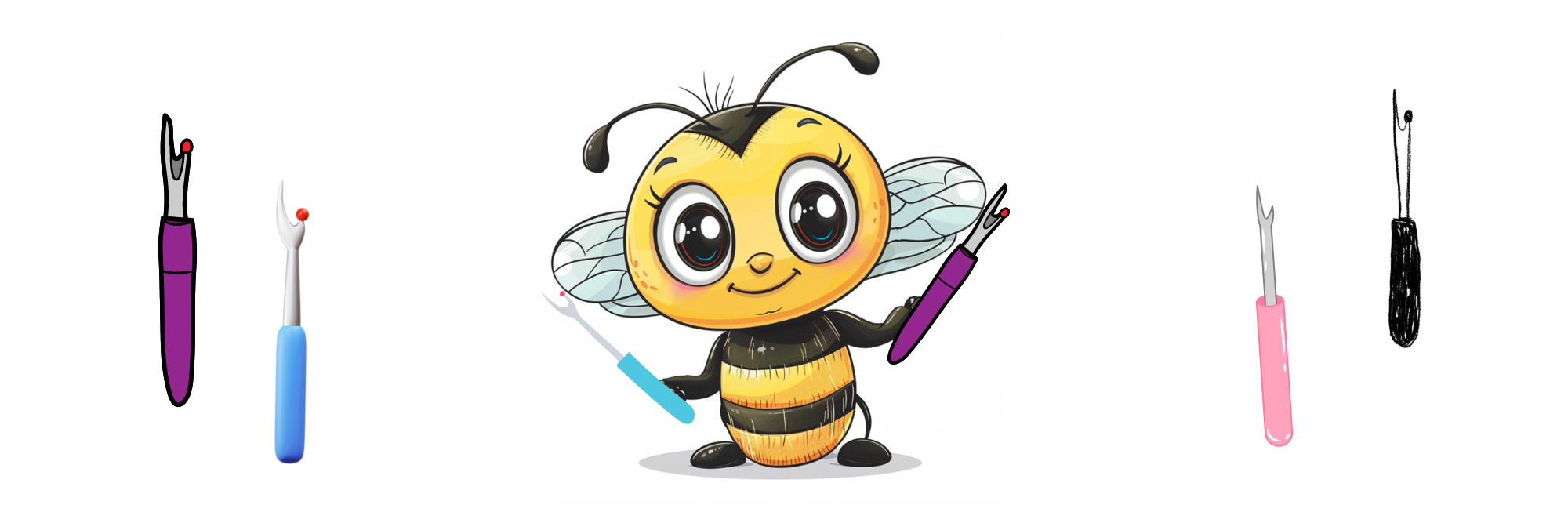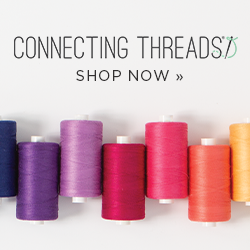Seam Rippers: The Unsung Heroes of Your Sewing Kit
When it comes to sewing, having the right tools makes all the difference. Among the most essential, yet often overlooked, is the seam ripper. Whether you're a beginner or an experienced sewist, a seam ripper is a must-have for your toolkit. In this blog post, we'll dive into the importance of seam rippers, how to use them effectively, the difference between using the ball side up or down, and some top recommendations to add to your collection.
Why You Need a Seam Ripper
Mistakes happen. Even the most skilled sewists occasionally need to undo stitches. That's where the seam ripper comes in. This handy tool is designed to remove unwanted stitches without damaging your fabric. It's perfect for correcting errors, altering garments, and even opening buttonholes.
How to Use a Seam Ripper
Using a seam ripper is simple, but there are a few tips to ensure you do it correctly and efficiently:
Identify the stitches to be removed: Turn your fabric so the stitches are visible.
Insert the seam ripper: Carefully slide the pointy end of the seam ripper under the stitch you want to remove.
Cut the stitch: Gently push the seam ripper through the stitch, cutting it.
Remove the thread: After cutting a few stitches, you can pull the threads away from the fabric.
Using the Ball Side Up or Down
One common question is whether to use the seam ripper with the ball side up or down. Here's the difference:
Ball Side Down: The small red ball is designed to glide along the fabric, reducing the risk of cutting into the material. This method is particularly useful when ripping out long seams. Insert the pointed end under a stitch, then gently push the seam ripper forward with the ball side down. The ball side will help lift the stitches away from the fabric while protecting it from snags and tears.
Ball Side Up: Using the seam ripper with the ball side up is typically for more precise work, like cutting individual stitches. This allows for greater control but requires more caution to avoid damaging the fabric.
Learn how to sew with expert instruction on Craftsy
Types of Seam Rippers
There are several types of seam rippers available, each with unique features:
Basic Seam Ripper: The classic tool with a small handle and a pointed blade.
Ergonomic Seam Ripper: Designed for comfort, these have a larger handle, making them easier to hold.
Lighted Seam Ripper: These come with a built-in light, perfect for working on dark fabrics or in low-light conditions.
Top Seam Rippers to Consider
Here are some of our top recommendations for seam rippers that you can add to your sewing kit:
Dritz Seam Ripper: A classic and reliable choice for any sewist. Check it out here.
Clover Ergonomic Seam Ripper: Comfortable and easy to use for extended periods. Check it out here.
Singer ProSeries Folding Seam Ripper: Compact and portable, great for sewing on the go. Check it out here.
Chuangdi Seam Ripper Tool with Light: Perfect for precision work, especially on darker fabrics. Check it out here.
Tips for Keeping Your Seam Ripper Sharp
A dull seam ripper can cause frustration and damage your fabric. Here are a few tips to keep your seam ripper in top shape:
Use it only for ripping seams: Avoid using it on materials other than thread.
Store it properly: Keep the cap on when not in use to protect the blade.
Replace it regularly: If you notice it’s not cutting as cleanly, it might be time for a new one.
Join Sewing Bee University
Looking to hone your sewing skills further? Check out Sewing Bee University for free tutorials, tips, and tricks to make your sewing projects even more enjoyable.
Happy sewing!
Affiliate Links
Dritz Seam Ripper: Buy on Amazon
Clover Ergonomic Seam Ripper: Buy on Amazon
Singer ProSeries Folding Seam Ripper: Buy on Amazon
Chuangdi Seam Ripper Tool with Light: Buy on Amazon
By purchasing through these links, you support our blog at no extra cost to you. Thank you!
For more sewing tips and patterns, visit Sew Cute Patterns.


